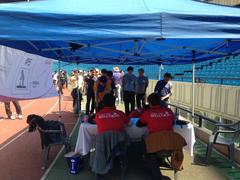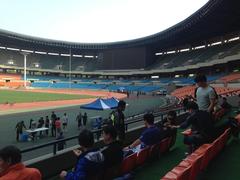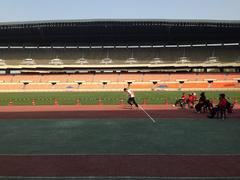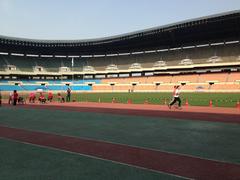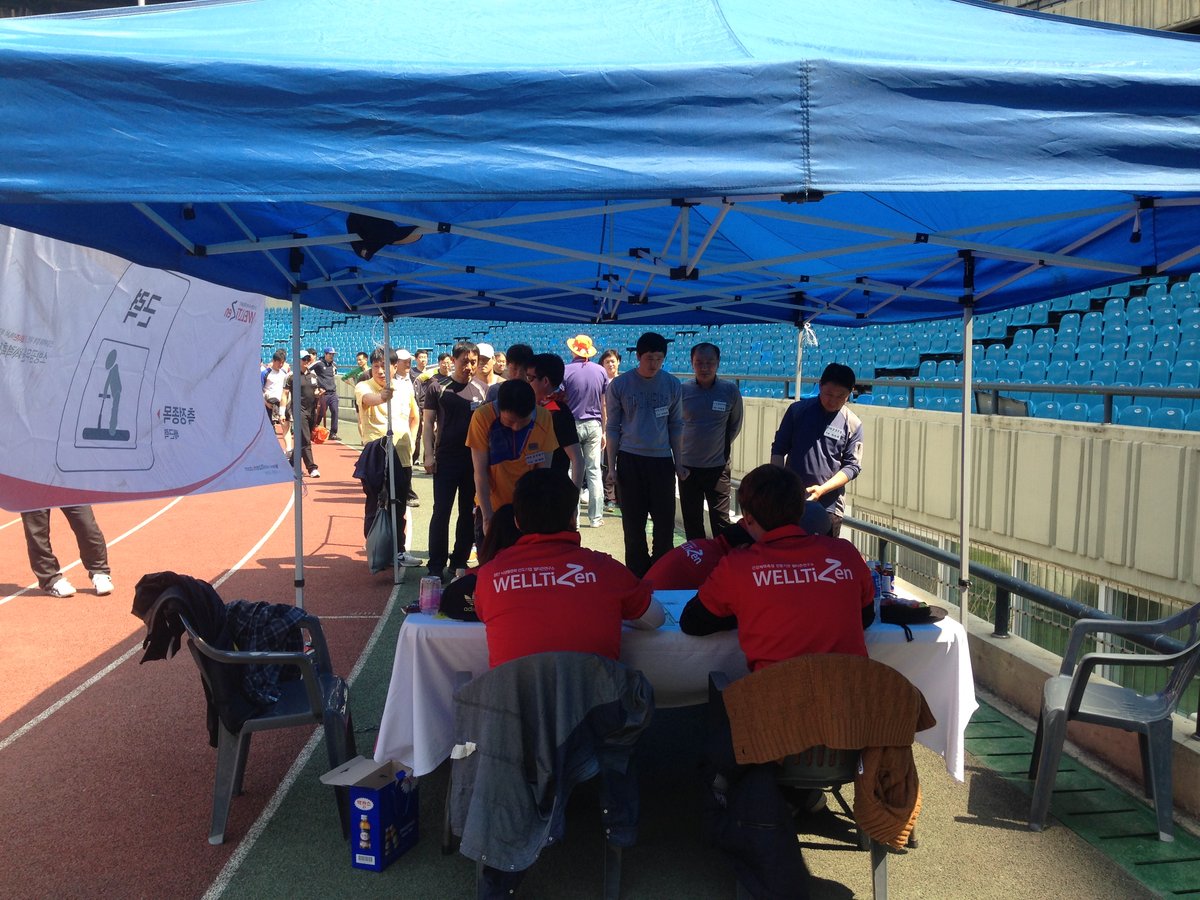
Seoul Olympic Stadium Visiting Hours, Tickets, and Comprehensive Guide to Seoul Historical Sites
Date: 14/06/2025
Introduction
The Seoul Olympic Stadium, also known as Jamsil Olympic Stadium, stands as a monumental symbol of South Korea’s modernization, cultural pride, and sporting achievement. Constructed between 1977 and 1984, it was the centerpiece for the 1986 Asian Games and the 1988 Summer Olympics, pivotal events that propelled Seoul onto the global stage. Today, the stadium, with a current seating capacity of approximately 69,950, continues to host international sporting matches, major concerts, and cultural gatherings, making it a cornerstone of Seoul’s urban identity. Its innovative design by architect Kim Swoo-geun, inspired by traditional Korean porcelain, seamlessly merges heritage with modernity, while the surrounding Olympic Park offers rich historical, cultural, and recreational experiences for visitors of all interests (Architectuul, Topend Sports, The Seoul Guide).
Table of Contents
- Introduction
- Origins and Historical Context
- Architectural Vision and Design
- Structural and Technical Details
- Cultural and Urban Significance
- Legacy and Continuing Relevance
- Visitor Guide: Hours, Tickets, and Tips
- Exploring Olympic Park and Surroundings
- Notable Features and Visitor Experience
- Frequently Asked Questions (FAQ)
- Conclusion
- References
Origins and Historical Context
The Seoul Olympic Stadium was conceived as a statement of South Korea’s ambitions to host global sporting events. Before its construction, Seoul’s main stadiums could not accommodate the scale required for the Asian Games and the Olympics. Construction began in 1977 as part of the broader development of the Jamsil Sports Complex, with the stadium officially opening in 1984. It gained international prominence during the 1986 Asian Games and the landmark 1988 Summer Olympics, which signaled South Korea’s emergence as a modern, globally engaged nation. The stadium hosted the Olympic opening and closing ceremonies, as well as key athletics and football events, projecting a dynamic image of Seoul worldwide (Architectuul, Design for by of Korea, ArchDaily).
Architectural Vision and Design
The visionary design of the Seoul Olympic Stadium is credited to Kim Swoo-geun, a leader in modern Korean architecture. Drawing inspiration from the curved silhouette of Joseon Dynasty porcelain, Kim crafted a structure that blends traditional aesthetics with contemporary engineering. The stadium originally seated up to 100,000 spectators, making it one of Asia’s largest at the time. Renovations have since adjusted the capacity for safety and comfort, while the two-tier, fully covered stands ensure clear sightlines and weather protection for all visitors (Design for by of Korea).
Structural and Technical Details
- Site Area: 132,200 m²
- Building Area: 75,469 m²
- Total Floor Area: 111,792 m²
The stadium’s robust structure relies on reinforced concrete and steel, allowing for long-term durability. Key features include efficient crowd flow through multiple entry points, wide concourses, and regular updates to amenities. Accessibility is prioritized, with ramps, elevators, and designated seating for visitors with disabilities (Architectuul).
Cultural and Urban Significance
Located in the Songpa-gu district south of the Han River, the stadium has shaped the development of the entire Jamsil Sports Complex. This area now serves as a major recreational and cultural hub, attracting locals and tourists. The architectural language of the stadium—merging Korean tradition with modern methods—has influenced public architecture nationwide, standing as a testament to Seoul’s evolving identity (Design for by of Korea, ArchDaily).
Legacy and Continuing Relevance
After its Olympic debut, the stadium continued as the “holy land” of Korean football, hosting national matches until 2000. While major football events have since shifted to newer venues, the stadium remains active, hosting professional football club Seoul E-Land FC, concerts, and large public gatherings. Recent revitalization initiatives, such as the Jamsil Sports MICE Complex, seek to preserve and enhance the stadium’s legacy, ensuring it remains a cultural and historical asset for future generations (ArchDaily, The Stadium Business).
Visitor Guide: Hours, Tickets, and Tips
Visiting Hours
- Stadium Public Access: 9:00 AM – 6:00 PM daily (varies on event days; check the official website for updates).
- Parkland Access: 5:00 AM – 10:00 PM; plaza areas open until midnight (audiala.com).
Tickets
- General Admission: Free when not hosting events.
- Guided Tours: 5,000–10,000 KRW per person; check for availability and schedule on the official website.
- Event Tickets: Prices vary by event; purchase online or at the stadium box office.
Accessibility
- Wheelchair Access: Ramps, elevators, accessible restrooms, and seating.
- Family-Friendly: Baby-changing facilities, stroller access, and lockers.
- Information Centers: Staffed with English-speaking personnel during major events.
Getting There
- Subway: Sports Complex Station (Line 2, Exit 6 or 7); Jamsil Station (Line 2 & 8); Mongchontoseong Station (Line 8).
- Bus and Taxi: Well-connected; signage in Korean and English.
- Parking: Limited; public transport recommended.
Tips for a Great Visit
- Book event tickets early for popular matches and concerts.
- Check event schedules before planning your trip.
- Bring snacks and water during non-event times as food options may be limited.
- Wear comfortable shoes for extensive walking in the park.
Exploring Olympic Park and Surroundings
Layout and Zones
Olympic Park spans 1.45 million m² and is divided into:
- Sports Zone: Six main stadiums, including Seoul Olympic Stadium, swimming pool, gymnastics arena, tennis courts, fencing gymnasium, and velodrome (The Seoul Guide).
- Culture & Art Zone: Over 200 outdoor sculptures and installations (VisitKorea).
- Eco-Park Zone: Lawns, wildflower gardens, and lakes.
- History Experience Park: Mongchontoseong Fortress and archaeological sites.
Key Attractions
- Seoul Olympic Stadium: Centerpiece of the 1988 Olympics (ArchDaily).
- World Peace Gate: Symbolic monument at the west entrance (The Seoul Guide).
- Mongchontoseong Fortress: Baekje-era rampart and archaeological site (audiala.com).
- Seoul Baekje Museum: Artifacts and interactive exhibits on Seoul’s early history.
- Sculpture Park: Diverse open-air art (VisitKorea).
- Peace Plaza and Flag Plaza: Festival and gathering spaces commemorating Olympic legacy (Visit Seoul).
- Lakes and Eco Trails: Scenic, family-friendly walking and cycling routes.
Recreational and Cultural Activities
- Sports and Fitness: Jogging, cycling, tennis, swimming, basketball (fees may apply).
- Cultural Events: Outdoor concerts, art exhibitions, and festivals (travel-stained.com).
- Seasonal Highlights: Cherry blossoms in spring, fall foliage, and winter tranquility.
Visitor Services
- Road Train (Hodori Train): Convenient park tours (VisitKorea).
- Bicycle Rentals: Explore the park’s extensive trails.
- Restrooms, cafes, shops: Widely available.
- Paid Parking: 600 KRW/10 min for small vehicles; 12,000 KRW for large vehicles.
Notable Features and Visitor Experience
The stadium’s graceful, vase-inspired architecture and the sweeping parklands make for exceptional photography, sightseeing, and relaxation. Inside, the stadium’s vast bowl and open sightlines capture the grandeur of Olympic competition. The adjacent Olympic Park delivers a unique blend of Korea’s ancient heritage and contemporary culture, making every visit a journey through Seoul’s rich past and vibrant present.
Frequently Asked Questions (FAQ)
Q: What are the Seoul Olympic Stadium visiting hours?
A: 9:00 AM – 6:00 PM daily; hours may vary on event days.
Q: How can I buy tickets for Seoul Olympic Stadium events?
A: Online through official platforms or at the stadium box office.
Q: Is the stadium wheelchair accessible?
A: Yes, with dedicated ramps, elevators, accessible restrooms, and seating.
Q: Are guided tours available?
A: Occasionally, by prior arrangement or during special events. Check the official website for updates.
Q: What’s the best way to reach the stadium?
A: Subway Line 2 (Sports Complex Station) is the most convenient; public transport is recommended.
Conclusion
Seoul Olympic Stadium is a living testament to Korea’s journey from rapid modernization to global prominence, seamlessly blending tradition with innovation. As the heart of the expansive Olympic Park, it offers a diverse range of activities and attractions, from historical fortresses and monumental art to sports, recreation, and world-class events. Looking ahead, major redevelopment projects like the Jamsil Sports MICE Complex will further cement the area’s role as a global hub for sports, business, and culture. Whether you’re an avid sports fan, culture lover, or history enthusiast, the stadium and its surroundings provide an enriching destination that captures the essence of Seoul. Plan your visit by checking current hours and ticketing information, and consider downloading the Audiala app for real-time updates, event alerts, and interactive guides.
Enjoy your visit to Seoul Olympic Stadium and Olympic Park!
References
- Seoul Olympic Stadium: Visiting Hours, Tickets, and Historical Significance of Seoul’s Iconic Landmark (Architectuul)
- Discover Seoul Olympic Stadium: Visiting Hours, Tickets, Attractions & Future Developments (The Stadium Business), (NBBJ)
- Olympic Park Seoul: Visiting Hours, Tickets & Key Attractions Guide (The Seoul Guide), (VisitKorea)
- Seoul Olympic Stadium Visiting Hours, Tickets & Guide to Seoul Historical Sites (Trek Zone), (KoreaToDo)
